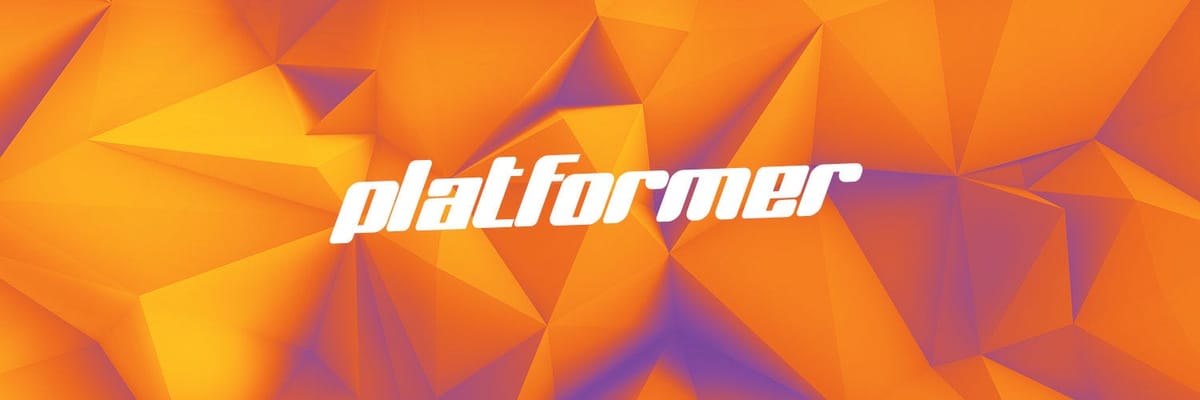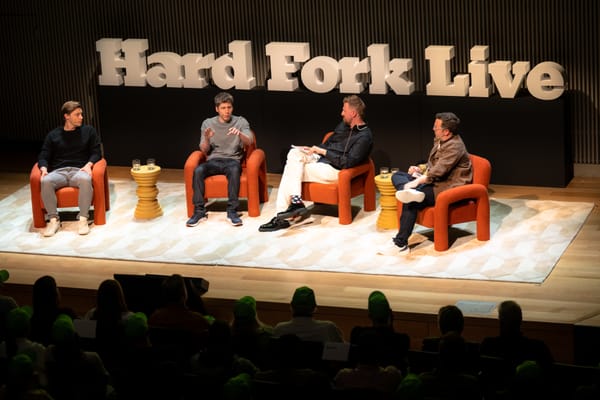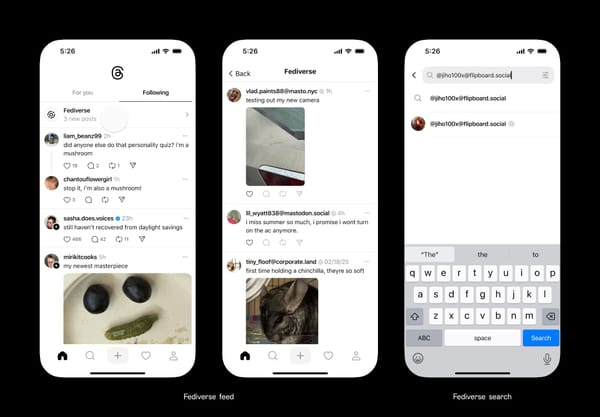What I learned from a year on Substack
Your questions about Platformer, answered

A year ago, I quit the best job I ever had to start Platformer. Today I wanted to tell you all how it’s going, what I’ve learned, and how I hope the business will evolve in year two. My hope is that this piece offers some texture to ongoing discussions about how the creator economy and traditional journalism intersect, and proves useful both to journalists considering making a move like this and readers who are curious about whether this model can offer a more sustainable path for journalism than the rocky one we’ve been on lately.
I.
Let’s start with the good news. Platformer is, thanks to your support, the best job I’ve ever had. It affords me a good salary, covers my health care, and pays for the various expenses that come with running a small business. I’m hopeful that your continued support will allow me to expand the business soon, in ways I’ll discuss later in this post.
That support has come on the back of growth that surpassed my highest expectations for year one. When I started Platformer with the mailing list I accumulated while writing my previous newsletter, there were around 24,000 of you. Twelve months later, there are 49,604 people subscribed to Platformer’s free list, and you regularly open this newsletter at a rate that far exceeds in the industry average.
How did it grow that quickly? In short, by publishing journalism. The biggest spikes in both free and paid membership over the past year came after I published the best reporting I did this year. Here are some of the stories I’m proud of:
- Platformer was the first to report the details of the email that got Timnit Gebru fired from Google, in a piece later cited in a Congressional inquiry.
- I revealed deep tensions within Signal over its plans to incorporate cryptocurrency and new social features into the app, risking a regulatory backlash that could threaten encryption globally.
- I explored how Medium’s latest pivot toward journalism ended in disaster for the talented journalists who worked there.
- I wrote the definitive pieces on what happened at Basecamp after its founders sought to eliminate political discussions in the workplace.
This was the incentive I hoped that this model of journalism would bring to my reporting: readers would encounter my journalism, like it, and pay me to go do more of it.
The result is a job that feels more durable, and sustainable, than any other employment I’ve had. In the past, to lose my job might require only a bad quarter in the ad market, the loss of an ally in upper management, or the takeover of my company by some indifferent telecom company. Today, I can really only lose my job if thousands of people decide independently to “fire” me. As a result, I’ve never felt more empowered to cover the issues I find most meaningful: the fraught, unpredictable collisions between big tech platforms and the world around them.
Anyway, here are some of the lessons I’ve learned in year one.
It’s a hits business. Platformer grows when it’s publishing good journalism — particularly journalism that takes you inside companies in crisis. The rest of the time, the business is largely static. Occasionally, a more analytical post will bring in a range of new signups. So will posts that tackle some new frontier yet to be picked up by traditional publications — this month’s story about Dom Hofmann’s blockchain project Loot was a hit, for example. Generally speaking, though, most columns don’t move the needle. In part that’s because …
Churn is real. Platformer loses 3-4 percent of its paid customers per month. To grow, it has to replace those customers and then find new ones. The good news is that a relatively small percentage of free subscribers ever have to convert to paid subscribers to make this a viable enterprise. But …
I converted a smaller percentage of subscribers to paid than I thought I would. Guidance I had gotten from Substack suggested I might expect 10 percent or so of my free subscribers to go paid. Given that 24,000 people had been reading me four days a week when I launched — some for three years — I thought that 10 percent would be a slam dunk. Instead, it was closer to 5 percent. That number has grown a bit over the past year, but it’s still well under 10.
One thing that did, help, though, was …
A Discord is a superpower that journalists can give themselves. In April I launched Sidechannel along with seven other independent journalists. (Facebook CEO Mark Zuckerberg stopped by for an interview.) The idea was to give free subscribers a reason to upgrade, since your subscription would now come with access to a community of smart, like-minded people, as well as some of the journalists working on their behalf.
Other than the stories I mentioned above, the Discord launch was the single biggest thing I did over the past year to convert paid subscribers. And beyond the business benefit, I’ve been struck at just how useful it is to have a Discord for my publication. I regularly get tips from readers for stories; good-faith pushback on things I’ve written; links I should read; and good tweets for the end of the daily newsletter. And all that has happened despite the fact that I generally feel like I’ve invested too little in Sidechannel to date. (More on that later.)
You hate interviews. Over the past year I’ve brought you news-making interviews with Facebook CEO Mark Zuckerberg, Snap CEO Evan Spiegel, Twitch COO Sara Clemens, Instagram chief Adam Mosseri, and WhatsApp chief Will Cathcart, among others. Because I write a publication closely associated with the tech industry, and social networks more specifically, it feels important to regularly ask questions of the people running those networks. What I’ve learned, though, is that almost no one becomes a paid subscriber because they liked an interview. (It’s possible my interviews are bad!)
I’m not giving up on Q&As entirely, but suffice to say: message received.
II.
And speaking of not giving up on Q&As entirely, here are some of the questions you asked me when I put out a call on Twitter and Discord about Platformer year 1.
How difficult (or easy) is it to get access to scoops and sources now that you’re working for yourself and not for an org like The Verge?
It’s been relatively easy. Before I quit, I reached out to all my beat companies to see if they would still take my phone calls if I went independent. To my great relief, they all said yes. And as you can see from the list of the interviews above, executives are still engaging with me — in some cases, more than they did before. (One reason: There were some editor-in-chief type conversations I was never invited to before this year, because I had never been editor-in-chief of a tech publication before.)
Meanwhile, I continue to have a great backchannel with rank-and-file workers via replies to each day’s edition and the Discord server. My WhatsApp and Signal are both still popping off. I always want more and better sources, of course, but generally speaking I feel good about this.
How free do you feel in terms of selecting the stories you want to cover and your take? Do you feel like you need to conform to what your paying audience expects?
Being captured by the audience is probably my greatest fear about running a newsletter over the long term. This is a real problem with trade publications — when you spend every day talking to a handful of companies, those companies come to sound more reasonable to you than they do to an average person. The good news is that Platformer also has plenty of paid subscribers who are outside the orbit of Big Tech: they’re academics, policy makers, consultants, and concerned citizens, and I regularly hear back from them when they think I’ve missed the mark. Also: a good number of rank-and-file workers subscribe specifically because they want to empower journalism and analysis that pushes their companies to do better.
I think my best shot at retaining real independence is to position myself at the uncomfortable center of all of these groups, and embrace the fact that they will push and pull me in various directions continuously.
One thing that has given me hope is that I often see a surge in subscriptions when I write about more unexpected subjects, as with the Loot example above. That tells me readers are hungry for novelty and don’t want me to stay in one lane forever.
How far in advance do you plan your publications? What’s your definition of balance between timeless pieces (e.g. Twitter should copy from Tinder) VS trending (e.g release of communities by Twitter)?
It varies widely. The general idea is to do at least one piece of high-quality reported journalism every week, give it away for free to a mass audience, and surround it with paid posts that are more relevant to people working in the industry. On a good Monday morning, I know what that free post is going to be, and I have some ideas for at least a couple of the paid posts. Generally I found this easier during the Trump years, when every single day was a series of infinite branching catastrophes. I’m still working to find a good rhythm now that we are in the ever-slightly-more-relaxed Biden era.
One thing I struggle with is that if I decided to investigate something, it generally has to be something I can wrap up quickly: every minute I spend reporting is a minute I’m not writing, and I write four newsletters a week. That tilts the balance of the newsletter away from original journalism more than I’d like, and it’s clear that original journalism is the thing that people are most excited to support financially. Reconciling those two things is going to be a focus for me in year two.
How's it been working more autonomously versus for a publication? Pros / Cons?
Pros: I feel like I have more control over my destiny. I own an asset that can grow in value over time. And I love working directly on behalf of readers, and interacting with them daily. Most of all, I love getting to experiment — with the Discord server, for example.
Cons: Having to do bookkeeping and accounting — there is so much more paperwork than there used to be. Not having a copyeditor for the daily newsletter — thanks to all of you who point out typos, which I endeavor to fix as quickly as possible. Most of all, in this line of work you can’t really afford to have a bad few months the way you can at a staff job. (Ask me about my 2017!) The business only works when I’m working.
All that said: it’s less lonely than people assume. I am still besieged every day by phone calls and text messages and emails and Twitter DMs and Discord pings and Zoom meetings. Thanks to everyone who has stayed in touch!
With limited time, what efforts do you prioritize for audience growth? What about for retention?
The only way a Substack grows is through tweets. I am like 85 percent serious when I say this. I have been featured in various Substack leaderboards, newspaper articles, podcasts, radio shows, and blog posts since Platformer began. The only thing that ever moves the needle is some screenshot of a paid blog post getting 500 likes. I wish I had other obvious avenues for growth, but to date it really feels like it’s Twitter or nothing.
As for retention, I’m still figuring that out. Usually when people unsubscribe and send a note, they don’t say they hated the publication. Rather, they’ve decided to spend less on subscriptions for whatever reason; they found they weren’t reading it as often as they assumed; or they changed jobs and it’s less useful to them than it was before. I can’t be unhappy about any of this, not even a little bit. For the most part, I think the only good retention strategy is to keep doing good journalism.
Is Sidechannel living up to expectations? What were some things you thought it'd be that didn't happen? What has it done that surprised you?
Yes and no. It’s been great to build a small community of Platformer readers and interact with them every day. Better yet, to watch them interacting with each other in friendly, constructive ways. And I was surprised when people I had never interacted with before showed up in my Discord DMs offering me story tips and advice. For these reasons alone, it has been a good project.
That said, I imagined it as a great, ongoing conversation between independent writers — a kind of public newsroom Slack channel — and that hasn’t materialized. There are two main reasons why: one, these writers are truly independent. Everyone is focused on getting their newsletter out, on spinning up a podcast, on a book project, on whatever. And so there hasn’t been the kind of regular interaction that I first envisioned. This issue was compounded by the fact that two of our initial writers — for excellent reasons, by the way — quit their newsletters within a few months of launch.
I’m long on Discord as a component of the Platformer subscription, but I think it would offer more value if it felt like a true water cooler for indie writers, and had more regular programming to bring you all in. This is largely a question of time management, and finding passionate collaborators.
One other thing folks have observed to me: no matter the Discord server, every channel seems to be dominated by the same few loud voices. None of them are breaking the rules, exactly, but they tend to crowd out other people who might otherwise share their opinions. I basically have no idea what to do about this.
Anything you learned in year 1 you'd want to avoid if you had to do it all over again?
I incorporated as an LLC using Stripe Atlas. Stripe Atlas is a truly fantastic product in the sense that you essentially snap your fingers and, for $500, get a fully formed LLC in return. At the same time, I now pay taxes in both California and Delaware, where Platformer is incorporated, and in hindsight I wish I had just set up shop in California where I live.
Any stray observations?
- I think the first wave of writers leaving mainstream publications for Substack has mostly crested. I talked to more than a dozen writers at big publications over the past year who were considering going independent; in the end almost none of them did. It can be a deceptively hard business, particularly if you don’t have some of the advantages I did — a large existing mailing list and a well defined product being the two most helpful.
- At the same time, I wish more journalists would explore this route. (And have been heartened by the local journalists who are trying this, backed by various platforms and media companies.) In my conversations, I was struck over and over again at how little journalists value their own work — in large part, I think, because their bosses have taught them to. Having myself worked at media companies that remind you often of just how easily you can be replaced, and scoff at the idea of even a 2 percent raise, I get it. But for the right reporter and the right product, the economics of independent life can be phenomenal.
- One of the best things about being independent is the flexibility to strike deals. All the big media companies take near-total ownership over your work, making it difficult to do things like start a newsletter, sell a podcast, or get a TV deal. The avenues for extending your work as a journalist are increasing all the time, and it’s fantastic to be able to take advantage of them. (One deal I’ve never taken is to put ads on the site, despite getting offers now nearly every week. Thanks to the paid subscribers who made that possible.)
What’s coming in year two?
My first priority is to continue to deliver a high-quality newsletter four days a week that breaks news, captures the moment, and promotes high-quality discussion about important issues.
But there are two things I know would make Platformer better. One is developing a podcast that connects to the themes of the newsletter but delivers it through audio. The other is hiring someone to help me put the newsletter together each day and free up more hours for reporting, thinking, and writing.
By the time I write my “what I learned in year two” post, I will have either done both these things or have a hilarious story about how and why I failed.
If you like what you have read so far but haven’t upgraded your subscription, I invite you to consider it: you’ll help Platformer expand its coverage and continue to tackle some of the most important topics of the day.
And if you are one of the thousands of patrons who helped me bring Platformer into existence: thank you from the bottom of my heart. Together, we’re elevating critical issues to the attention of the most senior executives in the tech industry, and pushing them to do better every week.
Before last year, this newsletter could have disappeared at any time, for any reason. Thanks to you, Platformer is here to stay.
Facebook Files
The fourth installment of the Wall Street Journal’s series might be the most upsetting so far, since it chronicles the naked inequality in resources Facebook devotes to policing its service in the United States compared with the rest of the world. That Facebook neglects foreign countries has been known since at least the Myanmar debacle, but the Journal story illustrates the degree to which the company is still unprepared or unwilling to do what it takes to act responsibly everywhere it operates.
That the company has set up shop in regions where it has no employees who speak the local language, and has not so much as translated its community standards so they can be read by its users, is an ongoing scandal.
Read the whole thing, but the heart of it is here in this paragraph from Justin Scheck, Newley Purnell and Jeff Horwitz:
In 2020, Facebook employees and contractors spent more than 3.2 million hours searching out and labeling or, in some cases, taking down information the company concluded was false or misleading, the documents show. Only 13% of those hours were spent working on content from outside the U.S. The company spent almost three times as many hours outside the U.S. working on “brand safety,” such as making sure ads don’t appear alongside content advertisers may find objectionable.
More:
Facebook keeps researching its own harms — and burying the findings. This analysis of the Journal series argues that the teams working to mitigate these issues are often isolated and lack support from upper management. (Will Oremus / Washington Post)
Related: The Journal’s investigation into Instagram and teens is likely to land the hardest with regulators, this piece argues. (Ben Thompson / Stratechery)
The Ratio
Today in news that could change public perception of the big tech companies.
⬆️ Trending up: Facebook will begin adapt its approach for fighting networks of fake accounts to fighting networks of real accounts that team up to do harm, such as brigading or falsely mass-reporting a target’s posts in an effort to have their accounts removed. It’s great to see brigading being taken seriously by a platform. (Elizabeth Culliford and Fanny Potkin / Reuters)
⬇️ Trending down: Extremists used TikTok to promote bringing guns to the Capitol for the January 6 insurrection, according to the Department of Homeland Security. “Others users shared videos in early- to mid-2020 with instructions for sabotaging railroad tracks, accessing the White House through tunnels, and interfering ‘with the U.S. National Guard during riots,’ the alert said.” (Betsy Woodruff Swann and Mark Scott / Politico)
⬇️ Trending down: Around 10,000 Telegram users are offering to sell fake vaccination cards, according to researchers at a cybersecurity company. They cost $200 in Bitcoin and often come with requests for personal information that would not be necessary to complete the transaction, raising additional questions. (Kevin Collier / NBC)
Governing
⭐ The Brazilian Supreme Court and Senate nullified rules issued by President Jair Bolsonaro last week intended to prevent social networks from removing claims related to the upcoming election. Bolsonaro had been laying the groundwork to stage a Trump-style protest that the election against him is rigged (unless he wins). A victory for internet freedom. Here’s Jack Nicas in the New York Times:
The dual moves by the court and by Congress late Tuesday quickly killed one of the most restrictive and intrusive internet laws imposed in a democratic country. It was a sharp rebuke to a president already struggling with a series of political crises.
When Mr. Bolsonaro issued the policy, it was the first time a national government had moved to stop social media companies from taking down content that violates their rules.
The Federal Trade Commission warned makers of health apps to notify customers who are affected by data breaches. “The new policy states that the rule applies to health apps, such as those tracking fitness or menstrual cycles, which have been developed over the past decade. “ (Maggie Miller / The Hill)
The Oversight Board will soon publish its first transparency report into its work with Facebook. “It will be the first of a series of quarterly reviews aimed at shining a light on how diligently Facebook has been following the board’s recommendations for each case.” The board has made 70 recommendations to date. (Parmy Olson / Bloomberg)
Related: In a case involving Palestine, the board this week recommended that Facebook engage a third party to review whether its content moderation in Arabic and Hebrew has been biased. (Oversight Board)
What does Facebook mean when it says it supports “updated internet regulations”? This clever piece examines Facebook’s ubiquitous web ads and finds that what the company supports are “content moderation systems that Facebook has previously put in place, potentially forcing competitors to do work Facebook has already done.” (Aaron Sankin / The Markup)
A look at the expanding use by police of “geofence warrants,” which use data from Google and other providers to determine who was near the scene of a crime and haul them in for questioning. “Google revealed for the first time in August that it received 11,554 geofence location warrants from law enforcement agencies in 2020, up from 8,396 in 2019 and 982 in 2018.” (Johana Bhuiyan / Guardian)
Twitter denied suspending Nicki Minaj for her tweets about her cousin’s friend’s balls. Separately, the White House denied inviting her for a visit. Barbz, come get your girl. (Blake Montgomery / Daily Beast)
Industry
The Apple rumors were wrong. Reporters and analysts who have nailed Apple announcements in recent years whiffed this week, raising the tantalizing possibility that Apple is purposely leaking disinformation in an effort to catch moles. (Mitchell Clark / The Verge)
Google’s Project Taara, a wireless optical connection to the internet, successfully beamed 700 terabytes of data across 5 kilometers. The technology was originally developed in conjunction with the since-shuttered Loon project. (Richard Lawler / The Verge)
Genius sold for less than the money it raised. A bellwether for the media industry: the company ultimately depended on Google for distribution, and collapsed after the company licensed its own lyrics for searches. (Sarah McBride / Bloomberg)
Tencent fell off the list of the world’s 10 most valuable companies after a series of restrictions imposed upon the company by China. “This is the first time that a Chinese company isn’t among the world’s ten largest since 2017.” (Ishika Mookerjee / Bloomberg)
Those good tweets
"self-driving cars will have to answer split-second ethical decisions, instantly calculating the worth of the lives of the people around them. can AI solve the trolley problem?"
— Shaun (@shaun_vids) 3:59 AM ∙ Sep 16, 2021
self-driving cars in reality: i swerved onto the sidewalk because i thought the moon was a stop sign
Please stop referring to things as "Orwellian". Some of us haven't read his books yet and you're spoiling them
— oldfriend99 (@oldfriend99) 4:34 AM ∙ Sep 16, 2021
Just a reminder that Norm Macdonald wrote the best book dedication of all time
— Sofiya Alexandra (@TheSofiya) 7:10 PM ∙ Sep 14, 2021
man what the hell
— hoodie (@99Cooking) 3:32 AM ∙ Sep 15, 2021
Talk to me
Send me tips, comments, questions, and ideas for year two: casey@platformer.news.





